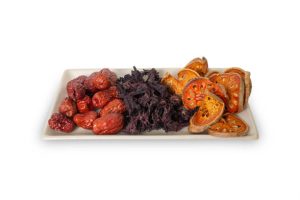High blood pressure, often termed ‘the silent killer,’ lingers in the lives of millions, overshadowing health with risks that come without warning. Understanding this condition, recognizing its gravity, and embarking on a journey to control it can significantly alter one’s well-being. The comradery that you and I share in learning to manage this condition is at the heart of this discussion.
The onset of high blood pressure marks the beginning of an unwavering commitment to oneself, a promise to step forward towards managing what can be a formidable foe when left unchecked. So, settle in, as we unravel the intricacies of hypertension, explore its management, and empower ourselves with knowledge to lead healthier lives.
Understanding the Pulse of Hypertension
Contents
- 1 Understanding the Pulse of Hypertension
- 2 Keeping Tabs: Diagnosis and Monitoring
- 3 Lifestyle Modifications – Small Tweaks, Big Impacts
- 4 Medical Management – The Pharmacological Pathway
- 5 Alternative Therapies – Veering into Complementary Avenues
- 6 Coping and Support – A Collective Effort
- 7 Towards Healthier Horizons: The Art of Prevention and Vigilance

Tracing the Causes
High blood pressure has stealthily integrated itself into modern lifestyles, with causes ranging from genetic predispositions to lifestyle choices. These whispering winds comprise diets laden with salt, the relentless pressure of stress, and physical inactivity seeming like an unassuming routine but are the heralds of hypertension. Furthermore, nuances such as alcohol consumption and tobacco use significantly heighten the likelihood of this condition gripping one’s health.
Risk Factors and a Closer Look
Standing at the crossroads of health, various signposts point directly to the risk factors of developing high blood pressure. Age stands tall among these signifiers, with the sands of time contributing to vascular rigidity. The familiarities of a family history, the nuances of ethnicity, and the impact of being overweight or obese also considerably add to this intricate tapestry of risk factors.
Lifestyle and Genetics: A Tango
It’s a delicate dance between lifestyle choices and genetic scripts that one inherits. Although we hold no sway over our genetic canvas, the power inherent in lifestyle modification cannot be overstated. It whispers a promise of control and an invitation to take action against the odds dictated by heredity.
Keeping Tabs: Diagnosis and Monitoring

The Diagnostic Conundrum
High blood pressure often cloaks itself in an aura of secrecy, producing no starkly evident symptoms. It’s usually only through routine checks that this elusive adversary is discovered. A cuff, a pump, and a gauge – the sphygmomanometer – serve as the primary tools to unveil the numbers that can often dictate one’s course of health care.
Home Monitoring – Empowerment in One’s Hands
The silent tide of high blood pressure necessitates vigilant monitoring, and modern technology affords us this power in the comfort of our homes. Arm monitors, wrist monitors, and even wearables offer a window into one’s circulatory system, granting the ability to detect anomalies before they escalate into murmurs of more significant concerns.
When to Seek the Guidance of Healthcare Providers
Regular consultations with healthcare professionals are pivotal in keeping hypertension in check. They are the constantly recalibrating compass that ensures our journey in managing high blood pressure remains on the right path. These visits become essential when readings repeatedly swing into the realms considered high or when symptoms, however mild they may seem, emerge.
Lifestyle Modifications – Small Tweaks, Big Impacts

Revamping the Plate for Pressure Control
The alliance between diet and blood pressure is intimate, with every morsel acting as a potential influencer on one’s vascular health. Enshrining heart-healthy eating habits is not just a mere recommendation, it’s an integral battle strategy:
- A symphony of fruits, vegetables, and whole grains
- A steady reduction of saturated fats and cholesterol
- A staunch control over salt intake
The Role of Physical Activity
Regular exercise stands as an unwavering pillar in managing high blood pressure. A routine as simple as a brisk walk, a morning swim, or a dance to the rhythm of one’s favorite tunes can yield significant results. Exercise works its magic by strengthening the heart, enabling it to pump blood with less effort, effectively lowering the pressure on one’s arterial walls.
A Balancing Act: Weight Management
The mathematics of weight and blood pressure is clear – as body weight increases, so does the pressure on arterial walls. Achieving and maintaining a healthy body weight is an intricate dance that requires a harmonious blend of regular physical activity and mindful eating. It’s a scale that tips the odds in favor of lower blood pressure when balanced right.
Medical Management – The Pharmacological Pathway

The Medication Ensemble
When lifestyle modifications alone don’t hold the fort against high blood pressure, medications enter stage right. Doctors may prescribe a range of different medicines, each performing unique acts to lower blood pressure:
- Diuretics to help rid the body of excess sodium and water
- ACE inhibitors to relax blood vessels
- Beta-blockers to reduce the workload on the heart
Deciphering Dosages and Side Effects
Understanding medications require a keen eye – dosages are carefully tailored to the individual, considering multiple factors, including the severity of hypertension and the presence of other health issues. Side effects can be a counterpart to these medicinal aids, ranging from fatigue to dizziness, making continued dialogue with healthcare providers essential.
Consistency in Check-ups
The journey of managing high blood pressure is not a solitary ramble but a periodic reunion with healthcare professionals. Regular check-ups provide a critical overview of one’s treatment progression, enable necessary adjustments to medications, and sustain the momentum in maintaining blood pressure within healthy confines.
Alternative Therapies – Veering into Complementary Avenues

Herbs and Supplements: The Natural Complements
Nature’s bounty offers an assortment of herbs and supplements claimed to aid in managing high blood pressure. From the potassium-rich embrace of bananas to the omega-3 fatty acids found in fish oil, these natural elements can be supportive companions to traditional treatments.
Stress Reduction – Unwinding the Knots of Tension
Stress is an elusive current that subtly elevates blood pressure, and finding ways to alleviate it is quintessential. Practices such as meditation, deep breathing exercises, and yoga can effectively dismantle the building blocks of stress, contributing to a calmer, more centered self.
Exploring Alternative Therapies
At times, wandering into the realms of alternative therapies can offer additional solace. However, this should never be a blind alley but a route taken with the consent and guidance of healthcare professionals to ensure it complements the conventional management of hypertension.
Coping and Support – A Collective Effort

The Emotional Tapestry of Hypertension
Dealing with high blood pressure extends beyond the physical – it’s an emotional journey that beckons for support. Mental health is a hidden echo in the chambers of managing this condition, and tending to it is as critical as monitoring the numbers on a blood pressure cuff.
The Solidarity of Support Groups
Support groups are lighthouses for those navigating the misty seas of hypertension. They offer a platform for sharing experiences, seeking advice, and finding comfort in the shared struggle. The encouragement found in these gatherings can illuminate the path to better blood pressure management.
The Family Factor
The role of loved ones in managing high blood pressure cannot be understated. A supportive family can create an environment that encourages healthy lifestyle choices, provides emotional grounding, and fosters motivation. They are the co-navigators in the voyage towards better health.
Towards Healthier Horizons: The Art of Prevention and Vigilance

Unmanaged High Blood Pressure: A Prelude to Complications
When high blood pressure is left to its own devices, it can unfurl into a spectrum of complications affecting the heart, brain, kidneys, and beyond. The art of managing this condition is not just in direct confrontation but in the understated finesse of prevention.
Proactive Measures to Curtail Hypertension
The arsenal against high blood pressure is stocked with proactive measures. It requires a vigilant eye for:
- Keeping up with lifestyle modifications
- Adhering to prescribed medication regimens
- Staying informed about the latest health guidelines
The Drumbeat of Regular Screenings
Prevention strikes a resonant chord with regular health screenings. They act as the consistent drumbeat, the background rhythm reminding us to remain alert to changes and proactive in prevention. The silence of high blood pressure is counteracted by the resonance of these consistent health check-ups.
High blood pressure, once a foe shrouded in obscurity, can now be approached with knowledge and assertiveness. The journey from understanding to managing this condition requires commitment, diligence, and a dash of self-compassion. We’ve woven through the intricacies of Hypertension, picked up tips on lifestyle modifications, navigated through medical management, and recognized the importance of support and vigilance.
This isn’t just about managing a condition; it’s about embracing a healthier lifestyle that sings in tune with longevity and vitality. So let’s put our hearts into this, for that’s where the journey to managing high blood pressure truly begins. Encircled by the knowledge we’ve garnered and the support of healthcare professionals, loved ones, and communities, taking charge of our blood pressure is not just possible – it’s within reach.

